From a young apprentice without formal education to a visionary sculptor redefining the art of carving gemstones, Wallace Chan (Chinese: 陈世英; pinyin: Chén Shìyīng) has transformed adversity into mastery, becoming the first Chinese contemporary jewellery artist to have his work in the permanent collection of the British Museum.
Born in Fuzhou, China, in 1956, Chan moved to Hong Kong at the age of five. By thirteen, he had left school to support his family, a challenging start that laid the groundwork for his incredible career. Despite these early hardships, Chan began an apprenticeship in gemstone carving at sixteen, going on to study Western sculpture; by 1974, he had set up his own workshop.
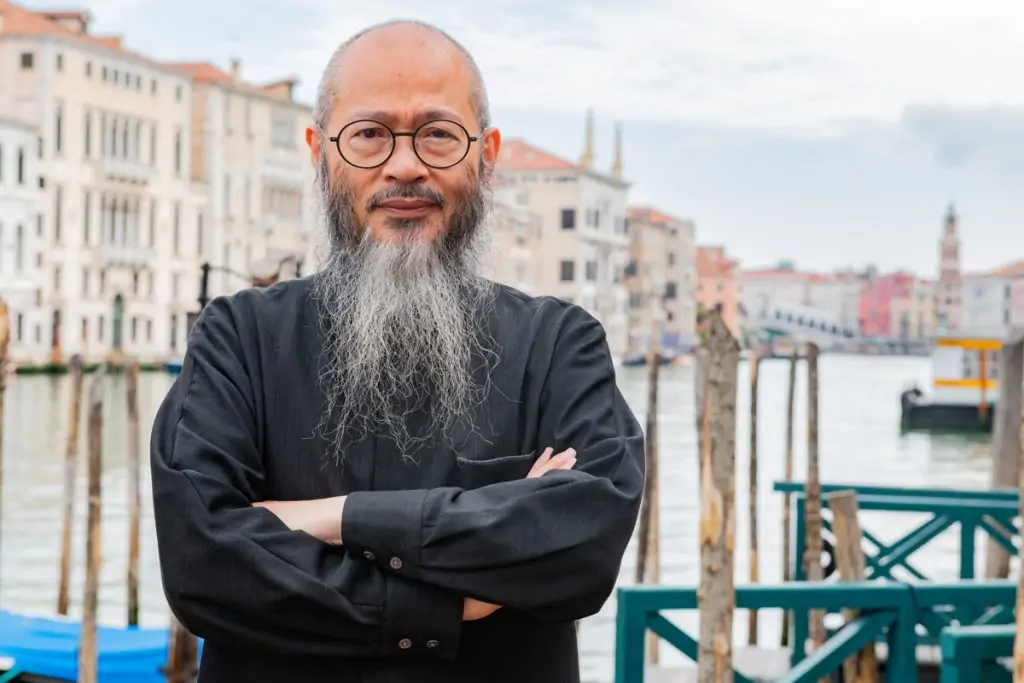
Many people have asked me where the inspiration or creativity comes from, and the answer is just one word – love.
Wallace Chan
However, Chan’s breakthrough came when he was commissioned to create a stupa in Macau for Taiwanese art collector Yih Shun Lin, an experience that encouraged him to focus on jewellery-making and sculpture. Adopting unconventional methods, such as embedding gems in lightweight titanium instead of gold, he coined what he termed “jewellery sculptures.” These creations maintained wearability due to their lightness and showcased unique techniques where gems secured each other without metal settings, an approach that allowed for unprecedented designs and marked a significant departure from traditional methods.
By 1987, Chan had pioneered his signature technique: the Wallace Cut. This revolutionary method involved modifying a dentist’s drill to carve gemstones. It created an illusionary effect—a mysterious fourfold reflection within the stone. Chan conducts the carving process in water to prevent heat and tension, which would damage the stone. Chan’s dedication to innovation not only earned him international acclaim but also continued through a transformative Zen journey in 1999. This journey deepened his spiritual understanding and further influenced his artistic expression.
In 2012, he became the first Asian artist to exhibit at the prestigious Biennale des Antiquaires in Paris and the first contemporary jeweller to hold a solo exhibition at the Capital Museum in Beijing. These milestones not only highlighted his skills but also affirmed his status as a pioneer in the jewellery world. Over the years, Chan has explored the capabilities of porcelain, creating the revolutionary Wallace Chan Porcelain in 2018, a material five times harder than steel. This new medium has opened further avenues for artistic expression, blending durability with the ethereal beauty typical of Chan’s aesthetic.
Two of Chan’s most notable pieces, celebrated for their intricate craftsmanship and symbolic depth, are his “Great Wall” necklace, composed of diamond maple leaves and a central jade stone, which sold for $73.5 million. Another exquisite item is his “Now and Always” pendant. This mysterious piece features a distinctive facial image inspired by the many-faced goddesses of Horae and is carved into an aquamarine gemstone. These are just two examples from Chan’s expansive portfolio of decadent pieces.
Chan approaches his practice with a spiritual mindset, embracing the inherent imperfections of existence and pursuing his ideals through otherworldly imagination. He sees the creative process as a means to recreate both himself and the world around him. The artefacts of his craft—jewels and sculptures—are exquisitely delicate and meticulously wrought from opulent materials and precious stones, reflecting Chan’s philosophical stance.
This year, Chan returns to Venice for the third time, with his monumental titanium sculptures suspended from the Chapel of Santa Maria della Pietà ceiling in his Transcendence exhibition. The exhibition delves into the quest for achieving a meditative state and examines how the mind can surpass typical spatial and temporal constraints. In addition, Transcendence represents the transformation of conflicts into opportunities for development and enlightenment, inviting viewers to reflect on the seamless integration of art with spiritual growth.
Chan’s work, defined by years of rigorous practice, study, and patience, showcases his delicate manoeuvres through the complexities of various materials, from gemstone to titanium and jade. There is both art and science in Chan’s approach as he combines precision with intuition. His hands perform meticulously choreographed movements while he inscribes the most petite precious stones. The mysterious beauty he imbues into gemstones immerses you in awe and wonder. His pioneering techniques and creative vision have established Chan as one of Asia’s most celebrated jewellery artists and sculptors, continuously pushing the boundaries of what is possible in jewellery design and sculpture.
Transcendence opens on the 19th of April until the 30th of September, 2024 at
Chiesa di Santa Maria della Pietà Riva degli Schiavoni 30122 Venezia VE, Italy
Hi Wallace, how are you? Could you start by sharing your earliest memory of being drawn to art, gemstones, and jewellery and how these experiences influenced your career path?
Wallace Chan: When I was 13 I had to quit school and began working full-time. I worked in a textile factory. I sold T-shirts on the street. Sometimes, I worked as a delivery boy. My uncle found me work at a gemstone carving workshop when I was 16 years old. To survive, I needed a skill, and during the 1970s, the gemstone carving industry was growing in Hong Kong.
In 1973, at the workshop, I was exposed to a piece of malachite for the first time. I was captivated by the gem’s changing patterns. It was beautiful and mysterious. I felt a sense of excitement in my heart – so much curiosity. How were these patterns formed? I followed the swirls and the colors, they led me into a dream.
The first decade of my creative journey was all about carving traditional Chinese motifs with opaque gemstones like jade or malachite. Chinese legends and beliefs became my teachers. Through imitating the past, I built a foundation for myself. But I knew that it was not enough. Something was missing – I just did not know what it was yet.
I was in my 20s. Every day, I would pass by a bookshop with great curiosity. I never received a formal education and so I was always curious about books, learning and school. Those people in the bookshop who buried their heads in books – they must be knowledgeable about everything. There must be so much that they knew, and I did not. I wanted to go in and become one of them, but how could I? I did not even know the difference between N and M.
But curiosity overcame me, and I pushed the door open.
Inside, there was a sea of books, but something caught my eye. It was the letter M. I started flipping through it and found a whole new world. It was a book on Michelangelo. I saw the muscles, the tension, the drama, the light and shadows. I saw movement and action. That book gave my life a new chapter.
I started to explore the changes of light through transparent crystal bodies. I learnt to notice light. I learnt to play with it. This dialogue with light fascinates me because it is always changing.
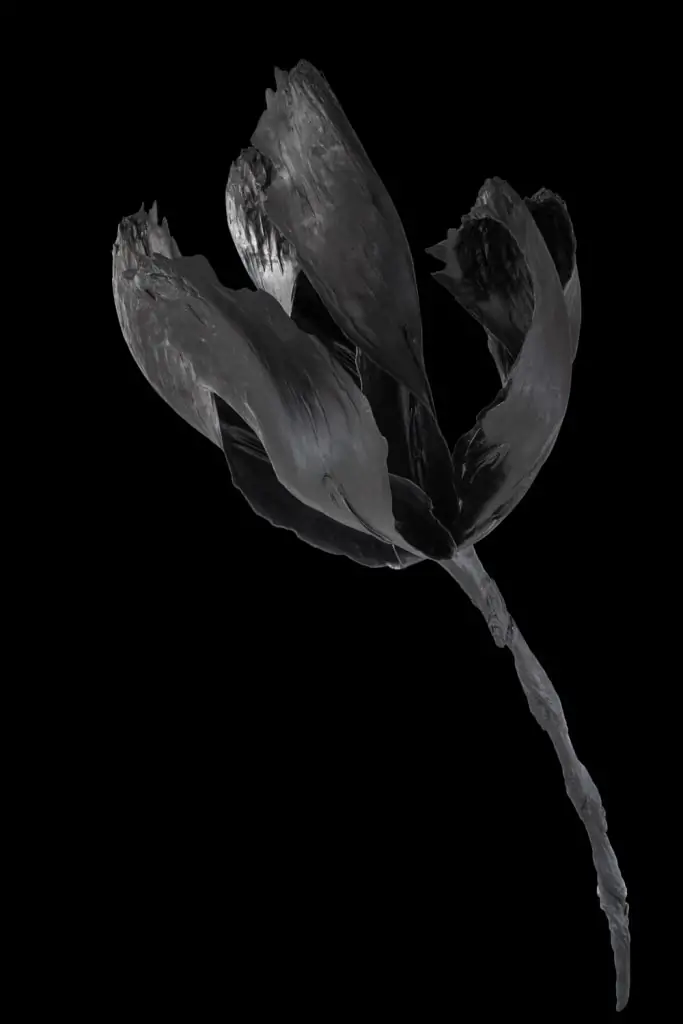
Wallace Chan
Your artistic practice is a unique blend of sculpture and jewellery, often reflecting deep philosophical and spiritual themes. Can you delve more into your practice, what inspires you, and other influential aspects?
Wallace Chan: When I work with a gemstone, it feels like I live only for it and forget my own existence and the world around me: the only important thing is the material.
Many people have asked me where the inspiration or creativity comes from, and the answer is just one word – love. If you experience this beautiful feeling towards people, gemstones, and the universe, then everything tends to inspire you. It’s very crucial to my creations.
From 1999 to 2001, I worked on the Great Stupa in the Buddhist Mountain, Taiwan. The completion of this process allowed me to experience some changes, mentally and spiritually. Later on, I became a monk for six months. After that, I returned to my jewellery-making and carving. I became much more aware of the world. I believe that all things in the world have their internal spirits. If you give your love to an object or a living thing, you will get love in return.
The artistic process is like a spiritual practice to me. When you practice spiritually, you also try to transcend your physical body, you transcend the material world, and you’re trying to get to the spiritual world in order to achieve a high level of wisdom.
In your work, how do you perceive and navigate the intersection between sculpture and jewellery?
Wallace Chan: In the intricate realm of jewellery, the smaller a piece is, the more challenging its creation becomes. I once carved a depiction of a Greek god on an emerald no larger than a fingernail. Such endeavours demand precision, for once carved, there’s no turning back. The ethos and intrinsic value captured in jewelry differ vastly from those in large-scale sculptures. In the minute details of jewelry, I explore boundless magnificence within the seemingly insignificant.
Conversely, in large-scale sculptures, I aim to convey that vastness, integrating creativity and self-expression. Whether on a grand scale or in minute details, my pursuit is always infinity. If I am very fortunate, I will live to the grand old age of 120, giving me 50 more years to live. But when I work, I am working on a timeline much, much longer than what this body of flesh and blood promises. When I am no longer here on this earth, my works will continue to exist. My work transcends not only my reality, but also my life and my time.
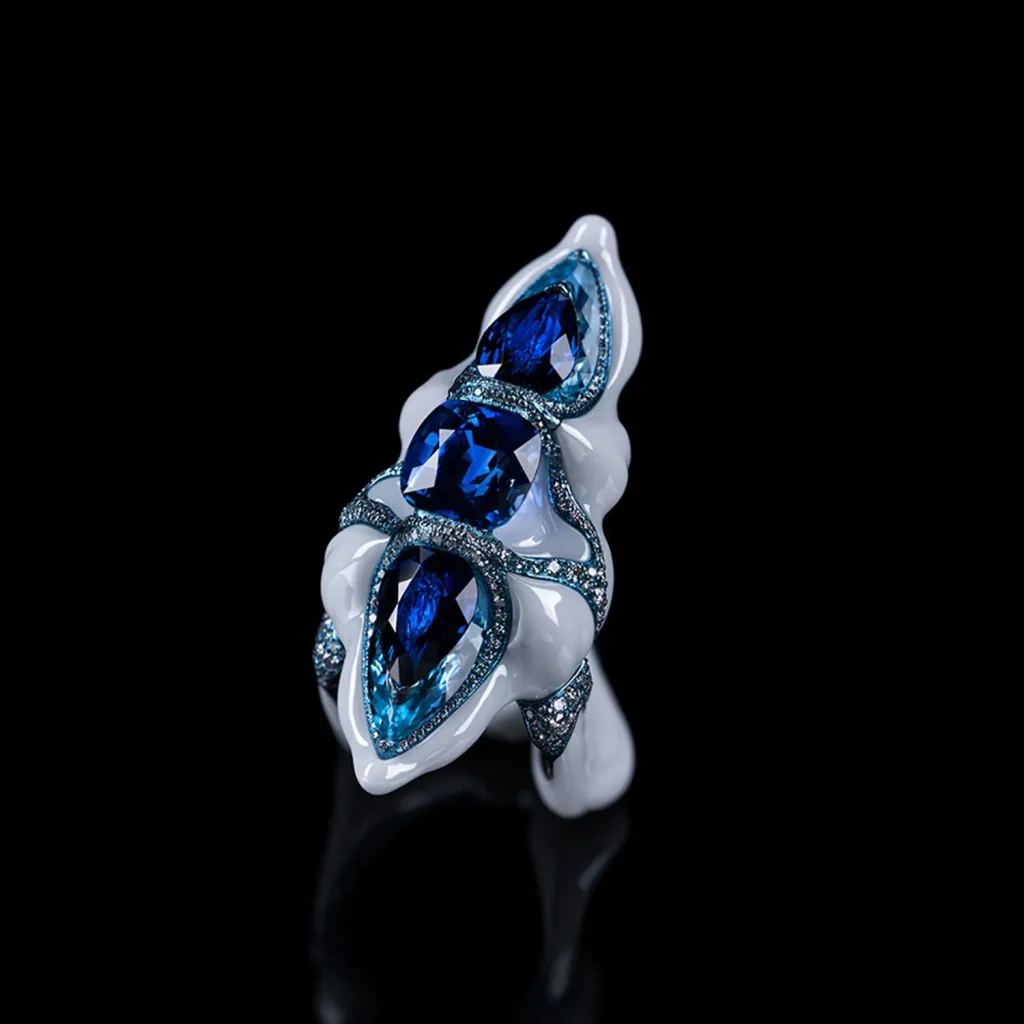
Image courtesy of Wallace Chan © Wallace Chan
Could you walk us through your creative process, from the initial idea to the final piece? How do you maintain a balance between artistic intuition and technical precision?
Wallace Chan: My creative process is not a linear process. It is full of surprises and chaos and I always work on many, many projects at the same time. Sometimes, I feel the incredible urge to create a piece; the idea may be something that appears out of thin air. Sometimes it is the stone that intrigues me, inspires me, and motivates me to create for it. There is not one single approach to creation. The only approach is possibly to create no matter what.
Both artistic intuition and technical precision are of extreme importance. I believe in a solid foundation. Craftsmanship skills provide you with the tools and methods you need to execute your creative visions; without skills, visions are merely visions.
How have your Chinese heritage and the diverse cultural experiences you’ve encountered influenced your artistic vision?
Wallace Chan: I find all cultures and religions compelling but I am not attached to any particular doctrine, and this gives me the freedom to absorb knowledge without any restrictions. When it comes to my creations, I want to achieve a universal beauty that can be shared by all.
In Chinese philosophy, what we think are “non-action” or “effortless action” (無為) is about embracing the rhythm of the universe and the natural order of things. It is a deep sense of acceptance, understanding, and adaptability to the ever-changing nature of life.
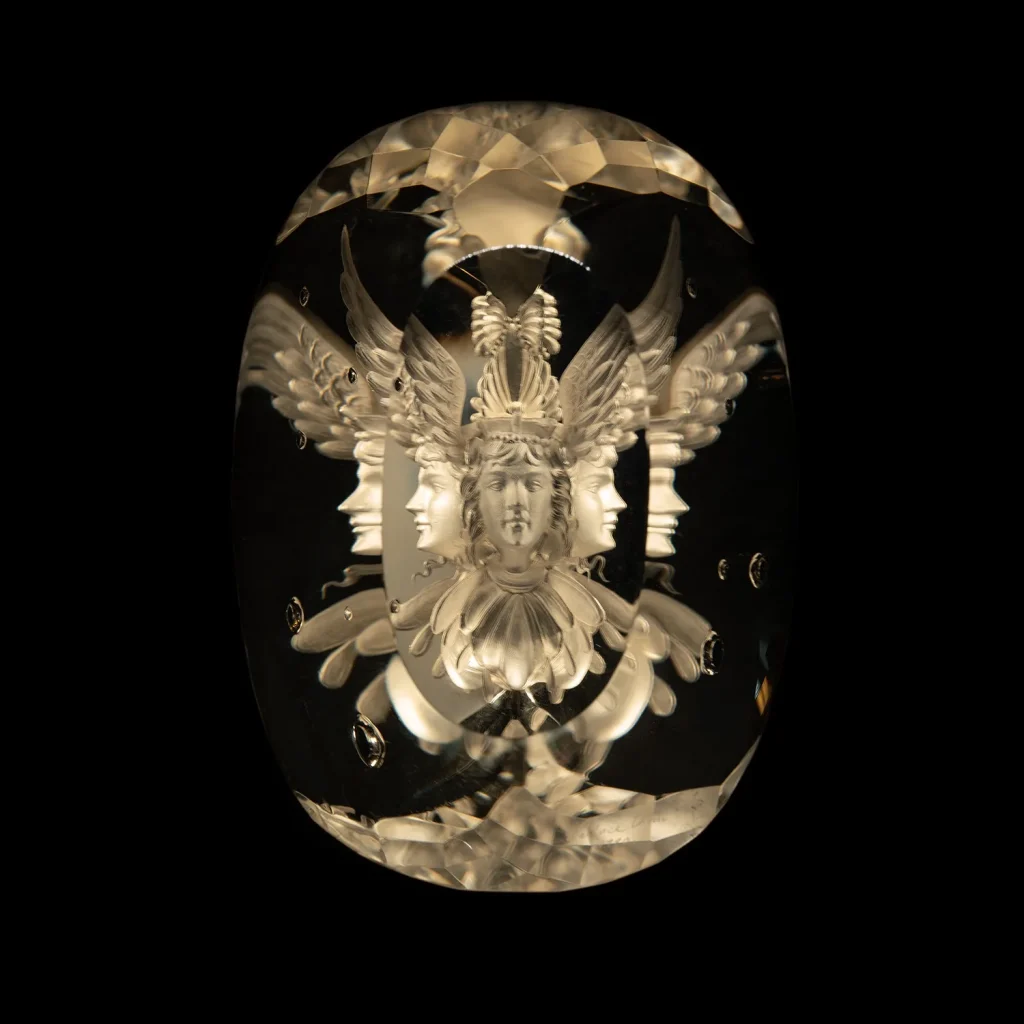
Image courtesy of Wallace Chan ©Wallace Chan
Let’s talk about the Wallace Cut. This innovative technique revolutionised gemstone carving. What was the inspiration behind it, and what challenges did you face in developing it?
Wallace Chan: In 1987, I invented the Wallace Cut, a creation that transcends 3-dimensional carving. On the front, you can see five faces. In fact, I only carved one face at the back of the stone. The other four faces are reflections created through precise calculations and faceting. It is a three-dimensional intaglio. It is reversed thinking combined with reversed carving motions. I mean, right is left and left is right, deep is shallow and shallow is deep.
It took me two and a half years to experiment with this carving technique. During that time, I also spent six months in a factory working as an apprentice so I could learn how to modify tools because the tools on the market were insufficient for my needs.
At last, after trial and error, I thought of changing a dental drill into a carving tool. But something wasn’t quite right. When the tool was drilling on the surface of the stone, it was rotating at a rate of 36,000 times per minute, creating high heat that would damage the stone. I had to change, not the stone, not the tool, but my way of working.
You’ve also pioneered the use of titanium in jewellery, an unconventional choice in this field. What led you to experiment with titanium, and how has it influenced your approach to jewellery design?
Wallace Chan: My journey with titanium began with an article in a newspaper. It mentioned that pacemakers, life-saving heart devices, were crafted from this metal. Intrigued, I delved deeper. Initially, the titanium casts I encountered were as minuscule as a tooth. But before mastering the art of smelting and casting it, I relied on basic techniques — hammering and carving, which was painstaking and time-consuming.
But that was just how much I wanted to work with titanium.
Titanium, for me, is akin to those unsung heroes we often encounter — formidable in strength yet almost invisible in their support. It is multifaceted; while it appears unyielding, it can be transformed. In my hands, the hard metal has taken forms as delicate as a needle or string, becoming as gentle as a piece of silk.
What has been the most challenging piece you’ve worked on during your career, and what lessons have you learned from that experience?
Wallace Chan: Every piece, at the time of its creation, is the most challenging. Because each piece is different from the last, the creation process always involves quite a bit of trial and error. Certainly, some experiments prove more difficult than others. When I created the Great Stupa for the Buddhist Mountain in Taiwan, I learned to look for the visible in the invisible. It took me nine attempts to drill through a crystal ball – only on my tenth attempt and on my last crystal ball did I get it right. I often say that my greatest challenge will be the next piece I create. I would not want my greatest challenge to be behind me.
Additionally, are any of your creations that stand out as a personal favourite or hold special significance?
Wallace Chan: Each creation is my own child, and I love them all so dearly. It has to be my favourite before I let it be seen by others. The Wallace Cut has a special place in my heart. It was the first invention in my life; it showed me that impossibilities sometimes contain possibilities bigger than what one can imagine.

Image courtesy of Wallace Chan ©Wallace Chan
Regarding your third Venice Biennale exhibit, “Transcendence,” where you presented four large titanium sculptures in the Chapel of Santa Maria della Pietà, could you elaborate on this exhibition and its underlying essence?
Wallace Chan: It is a journey that is composed of four sculptures, each representing a season. Only that the first sculpture stands for Winter, the second Spring, the third Summer and the last Autumn.
The first sculpture that confronts the visitors is a rather terrifying skull-like face with hollow eye sockets and a gaping mouth as if in shock. Although it appears outwardly frightening and distorted, if you look longer and carefully it becomes more tranquil and less intimidating.
The sculpture’s gaping mouth and cavernous eye cavities also resemble open flower petals. This ‘floriform’ face has a conceptual relationship to the last sculpture in the series, a vast tulip with open petals. In Chinese culture tulips are a symbol of renewal and represent the start of a fresh cycle and new beginnings. Flowers also have a special significance in Buddhism, besides symbolizing impermanence; each phase of growth represents different stages on the path to enlightenment.
As a respected figure in your field, what legacy do you hope to leave in the world of jewellery and art? Are there any new techniques or materials you’re currently exploring?
Wallace Chan: I leave it to history to give me my place in it.
To me, creation and invention go hand in hand. There is no creation without invention. For example, each piece of jewelry is composed of thousands of parts, and I am constantly inventing tools or methods to connect these parts, as seamlessly as possible, and as long-lastingly as possible. I create with the purpose that my work will outlive me, so the structure and engineering of each tiny part is just as important as the aesthetics and the stories of the creation. As long as I keep creating, I continue to explore and innovate.
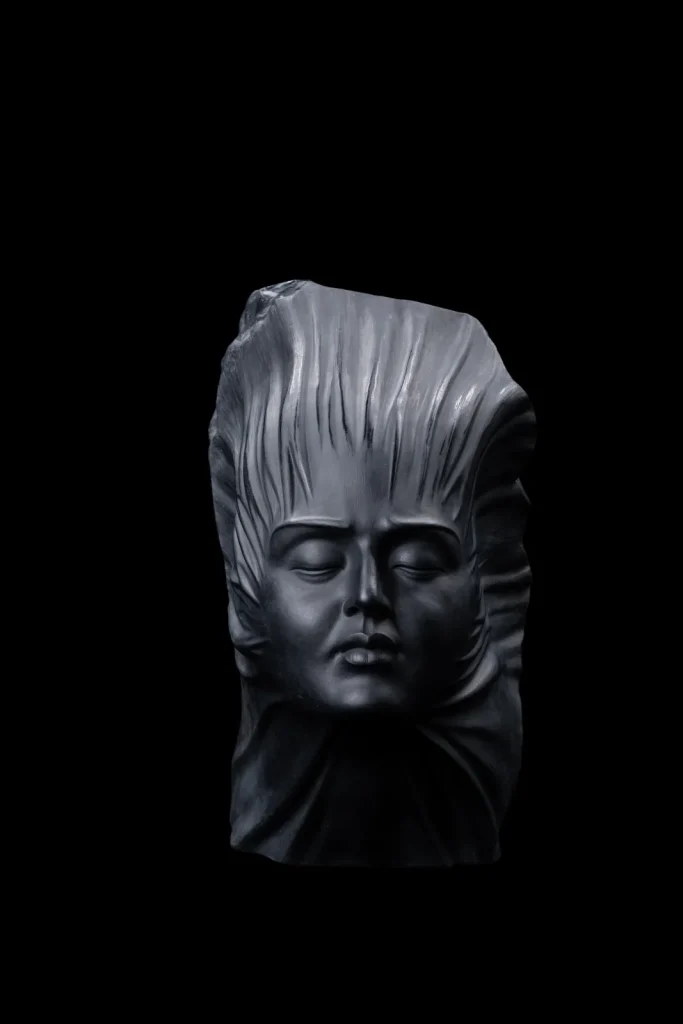
THE POST BUDDHISM PERIOD 2000S-2010S
Image courtesy of Wallace Chan ©Wallace Chan
Finally, could you share your philosophy on art? How do you understand and express the core meaning and importance of art in both your personal life and professional work?
Wallace Chan: I have never felt that art should be elitist. I grew up in poverty, and art was supposed to be so far away from where I was and who I was. But somehow, a magical turn happened, and art saved me. The power to create became my lifeline, and it still is. I live to create, and I create to live. You don’t have to take away an art piece, to take away a story – that’s what I believe in.
©2024 Wallace Chan





